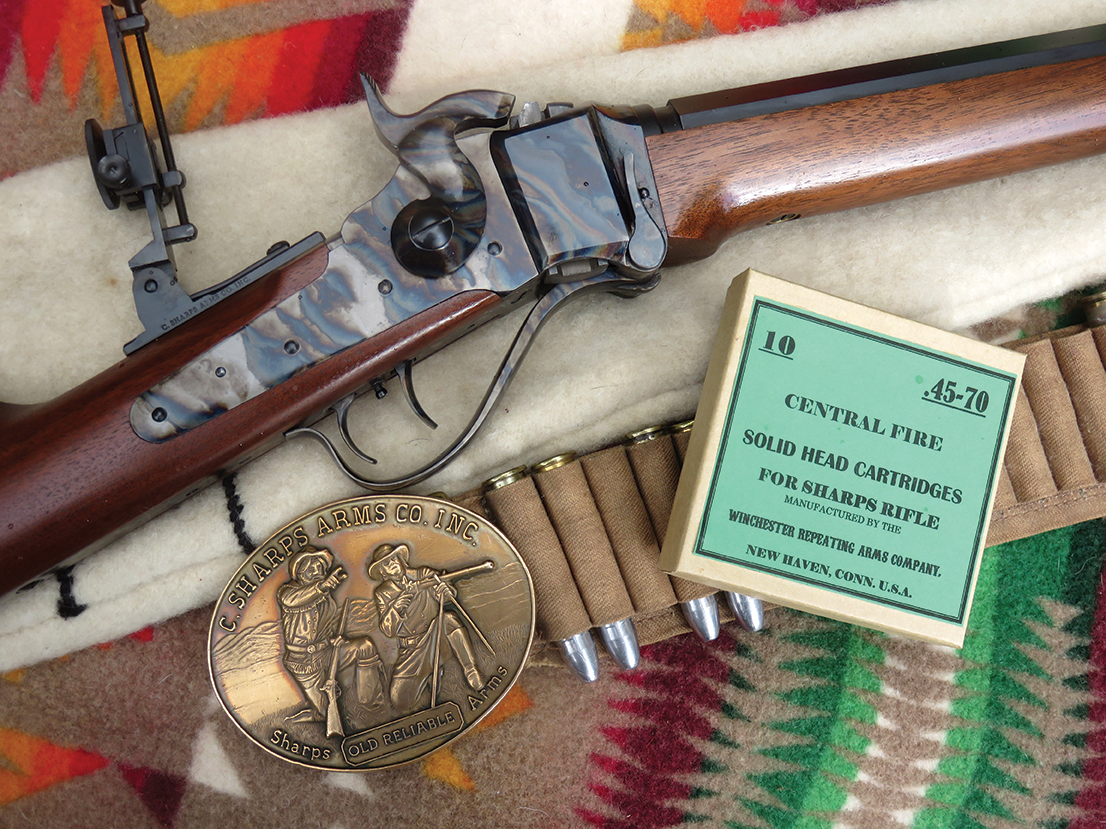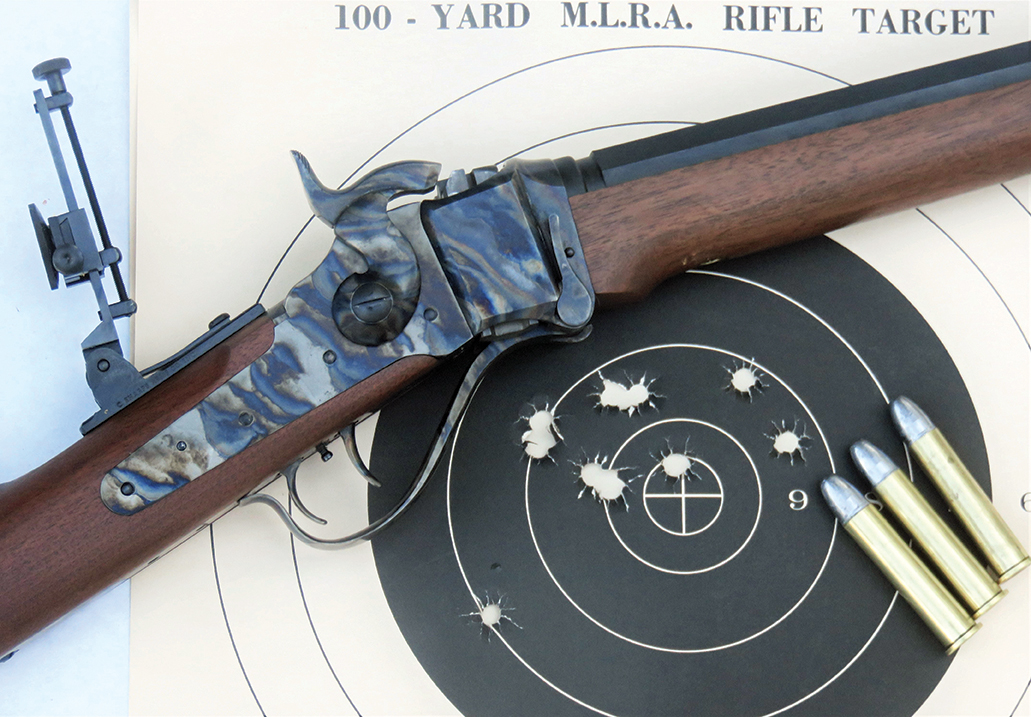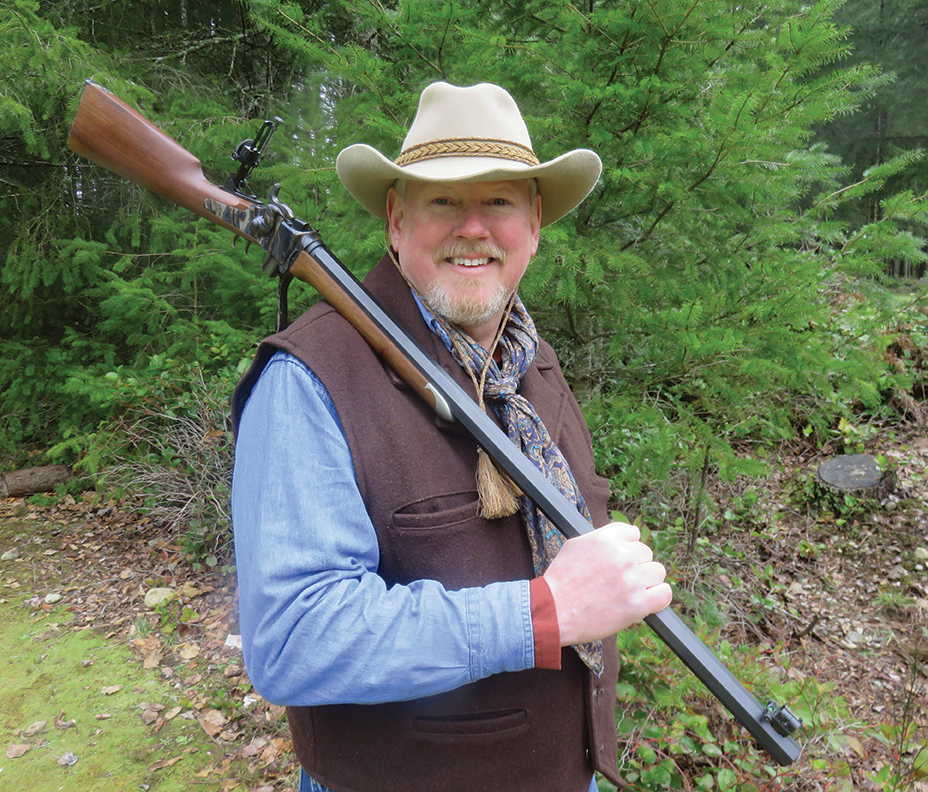A Sharps of My Own
feature By: Mike Moran | June, 23

The gun I ordered was an 1874 Hartford Sporting Rifle from C. Sharps Arms back in November 2021. Having just retired, my plan was to join up with the Black River Buffalo Runners at the Capitol City Rifle & Pistol Club in Littlerock, Washington, so I could start shooting more. I’d known those guys for several years, but I only got to join them occasionally. Over breakfast one day, Mike Nesbitt offered some sage advice. “Even if you’re not sure about what features and options you want, you ought to call C. Sharps and put down a deposit, since the waiting list is about 10 months long. We can discuss the details later.” So, I did, and the rifle finally arrived.

Historically, an 1874 Hartford Sporting rifle in 45-70 was a very unique combination, with perhaps only a very few of them made before Sharps relocated their factory from Hartford to Bridgeport, Connecticut, and started making the Bridgeport models. It was not a favored caliber of the buffalo hunters of the era, but was often purchased by military officers, as they could get that same ammunition free from the army. As a former army officer myself, I guess this makes it an appropriate choice.
The rifle is beautiful. The first thing that stood out was the color case-hardened action, with vivid blues and tans in its mosaic of coloring. Next, the stock is gorgeous, with nice straight grain and sharp crisp lines. I was able to select the wood when I stopped by the C. Sharps Arms’ shop on the way out to the Quigley rifle match last June. But something looked different, so much so that I thought for a minute that they might have sent me a different gun. Then it hit me – it looked “naked” without the midrange deluxe sight I’d purchased separately. Once that was mounted on the tang and combined with the Globe front sight and spirit level up front, the whole picture came in to focus. I was in love.
C. Sharps Arms provides good instruction on how to mount the sights to ensure the best results. After removing the forestock, the gun is clamped in a padded vise and leveled, with the upper flat of the barrel checked with a torpedo level. With the sight mounted in the pre-drilled holes, a plumb bob is hung some distance away to provide a true vertical line and the gun sighted on this line. The eyecup is moved through the range of elevations, ensuring the apertures remain on the plumb line. If it drifts off the line, the base of the sight can be carefully filed to adjust how it sits against the tang. In my case, it was right on.

Range day, finally. Through trial and error, many of the guys have learned it’s important for the first 20 shots or so to keep the barrel as clean as possible, until it has a chance to “season” with lube. So, after a good initial cleaning to remove any oils from the manufacturing process, I started with the following regiment. For the first 10 shots I would clean the bore after every shot, then after every two shots for the next 10. For this, I used two bore mops, the first saturated with October Country’s Blue Thunder Black Powder Solvent and run through to remove the fouling, then the second mop to dry the bore. Just for good measure, I then ran a patch lubed with buffalo tallow and beeswax through while the barrel was still warm. It was slow and methodical, but worth it to keep the bore free and clean.

Needing a starting point, I set the sight to .37, which is what I’d been using with Mike’s gun for targets at 100 yards. I loaded one of the 45-70 cartridges, set the trigger, and fired. Before I looked at where it had landed, I got the cleaning job out of the way. Leaning over to the spotting scope, I saw a target with no holes in it. Dang! So, I asked Bob DeLisle to spot for me as I took my second shot. “You’re over the top of the paper,” he said, so I adjusted the rear sight down and swabbed the barrel. My third shot hit the paper, and with the fourth and fifth shots, I settled into a setting of .27. Mike’s gun has the same sight, but has a 34-inch barrel, which may account for the big difference. Either way, I had my sight setting.
Turning to the second 100-yard target I had set up; I fired the sixth shot. Now, these first 10 shots were just to get the bore seasoned and the gun broken in, so I was not concentrating on accuracy, but when I looked in the spotting scope, I saw a hole dead center on the target. I certainly could be happy with that! The remaining shots in that string (7 through 10) all hit in the 9 and 10-rings. It was time to pack it in for the day and celebrate over a nice lunch at the local saloon.
It was the end of a long journey and I couldn’t be happier with the Sharps rifle I received. It’s a beautiful work of art and I’m pleased that I can now finally shoot with all my own gear. I’ve loaded up a shelf full of ammunition and look forward to the weeks ahead to really get familiar with shooting it. As I sat in the saloon with my hamburger, waiting for the ketchup to slowly come out of the bottle, I wondered how long it would be until I get my next Sharps.


